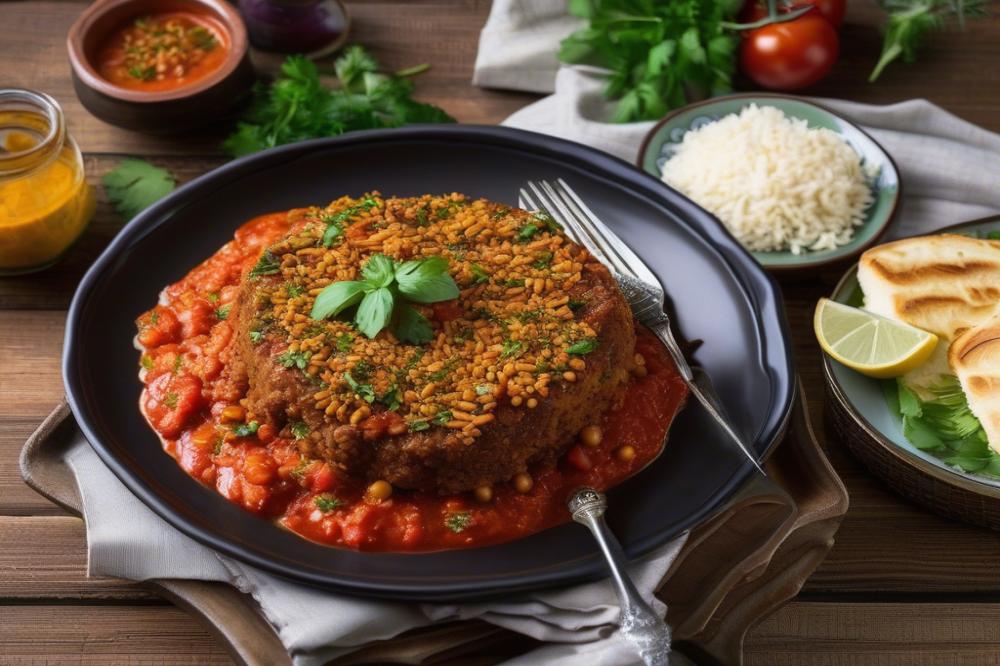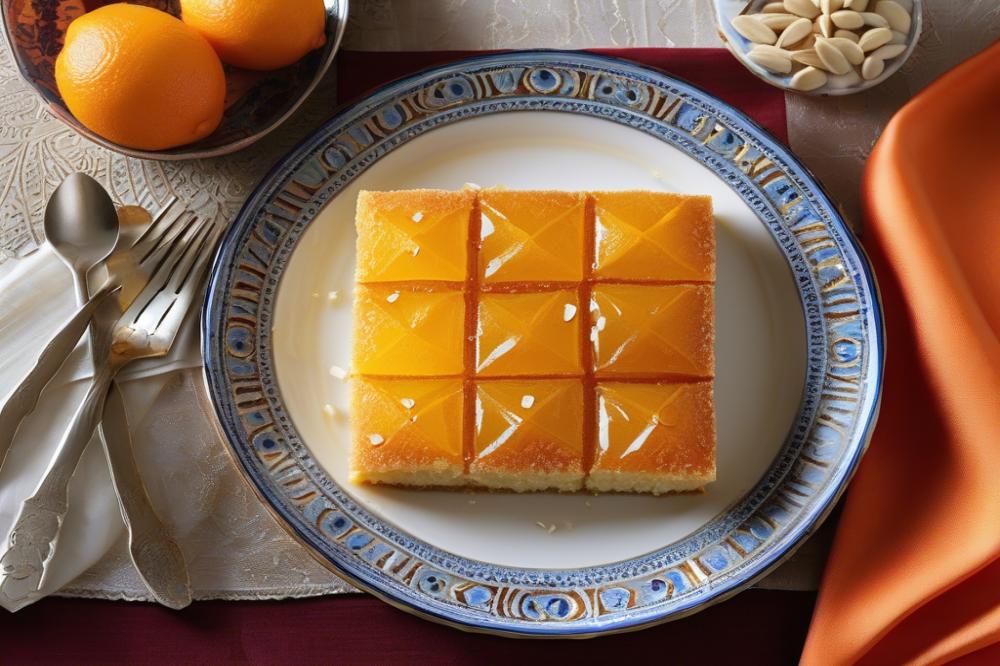The Role of Spices in Traditional Moroccan Cooking
Moroccan cuisine stands out as a vibrant tapestry of flavors and aromas, woven from centuries of history and cultural exchange. Influences from Berber, Arab, and Mediterranean traditions create a culinary style that is both rich and diverse. Each meal tells a story, reflecting the land and its people.
Spices are vital in this unique cooking style. They transform simple ingredients into extraordinary dishes. From savory to sweet, the right blend can evoke memories and emotions, making every bite memorable. Dishes like tagines and couscous thrive on these aromatic enhancements, elevating them to new heights.
Some key Moroccan spices include cumin, known for its warm, earthy flavor, and coriander, which adds a citrusy note. Saffron, often considered luxurious, brings a golden hue and a delicate taste. Cinnamon offers sweet warmth, while paprika creates depth and color in many traditional recipes.
Other notable ingredients are harissa, a fiery chili paste that sparks excitement in every dish, and turmeric, celebrated for its health benefits and vibrant color. Ginger provides a zesty kick, balancing rich meats and stews. Ras el hanout is a traditional spice mix, reflecting regional variations, where each blend tells a story. Za’atar, with its herbal notes, brightens dishes and offers a taste of the Mediterranean.
Through these spices, Moroccan cooking invites exploration and connection. They play an essential role in not only flavor but also culture. Each spice carries its significance, linking the past to the present, and keeping traditions alive.
The Essence of Moroccan spices


Traditional Moroccan cooking relies heavily on spices. These ingredients not only add flavor but also provide numerous health benefits. Spices are central to the culinary identity of Morocco. They transform simple meals into vibrant experiences filled with aroma and taste.
cumin
Cumin offers an earthy flavor that is warm and rich. It is often used in tagines and stews. This spice is also known for its digestive benefits. Including cumin in meals can aid digestion and promote a healthy gut.
Coriander
Coriander has a bright flavor with citrus notes. It complements many dishes, especially those with meats. Beyond its taste, this spice provides anti-inflammatory properties. Adding coriander can boost overall wellness.
Saffron
The luxurious saffron is famous for its stunning aroma and vibrant color. This spice elevates dishes, making them visually appealing. Some studies suggest it may enhance mood. Saffron’s unique qualities make it a treasured component in Moroccan cuisine.
Cinnamon
Cinnamon brings warmth and sweetness to many traditional recipes. It can help regulate blood sugar levels. This spice not only adds flavor but may also aid in weight management. Its comforting scent often reminds one of home-cooked meals.
Paprika
Paprika offers a sweet yet smoky flavor that defines many Moroccan dishes. This spice is rich in antioxidants, which contribute to health benefits. Using paprika can add depth to sauces and stews, enhancing their overall profile.
Harissa
Harissa is a vibrant spice blend that gives Moroccan dishes a nice kick. Often made with chili peppers, garlic, and spices, it is known for boosting metabolism. This blend can be used in marinades or added to soups for added heat.
Turmeric
Turmeric stands out for its bright yellow color and numerous health benefits. This spice is celebrated for its anti-inflammatory properties. It can also support the immune system, making it a valuable addition to traditional dishes.
Ginger
Ginger’s warm, spicy flavor has been cherished for ages. This versatile spice serves as a digestive aid and helps combat nausea. It can be enjoyed fresh or ground, adding a kick to various recipes.
Ras el Hanout
Ras el Hanout is a complex spice blend that represents the heart of Moroccan flavor. Each blend varies, but it often includes spices like cinnamon, cumin, and coriander. This blend contains numerous health benefits, adding both taste and nutrition to meals.
Za’atar
Za’atar is an herbal blend known for its rich flavor and aroma. It often includes ingredients like thyme, sesame seeds, and sumac. Many appreciate its high vitamin content, making it both tasty and healthy. This spice enhances dips and spreads, while also seasoning meats and vegetables.
Classic Moroccan Recipe: Chicken Tagine with Preserved Lemons and Olives


This flavorful dish embodies the essence of Moroccan cooking. The combination of spices creates a rich and aromatic experience. Ingredients are simple yet contribute significantly to the overall taste. Be prepared to enjoy a dish that represents the heart of Moroccan cuisine.
Ingredients List with Quantities
- 4 chicken thighs
- 2 tablespoons olive oil
- 1 large onion, diced
- 2 cloves of garlic, minced
- 1 teaspoon ground cumin
- 1 teaspoon ground coriander
- 1/2 teaspoon saffron threads
- 1 teaspoon ground cinnamon
- 1 teaspoon paprika
- 2 tablespoons harissa
- 1 cup chicken broth
- 2 preserved lemons, quartered
- 1 cup green olives
- Fresh cilantro for garnish
Cooking Instructions
- To start, heat olive oil in a tagine or a pot over medium heat.
- Add the diced onions and minced garlic. Sauté until tender and translucent.
- Next, stir in the spices: ground cumin, ground coriander, saffron, ground cinnamon, paprika, and the spicy harissa. Let the flavors mingle.
- Add the chicken thighs. Brown them on all sides to seal in the juices.
- Pour in chicken broth and bring everything to a gentle simmer.
- Add the quartered preserved lemons and green olives to the pot. Cover it and let it cook for about 45 minutes.
- When it’s done, serve hot. Garnish with fresh cilantro for a bright finish.
Nutritional Information for Each Ingredient
- Chicken: lean protein, essential B vitamins
- Olive oil: contains healthy fats, rich in vitamin E
- Onions: a source of fiber, packed with antioxidants
- Garlic: known for immune support and health benefits
- Spices: each offers unique health advantages, like aiding digestion and enhancing metabolism
- Preserved lemons: provides vitamin C, helps with digestion
- Olives: include healthy fats, beneficial for heart health, and vitamin K
The Cultural Significance of Spices


Traditional methods of sourcing and preparing spices in Moroccan homes
Traditional Moroccan households often rely on techniques passed down through generations. Families cultivate relationships with local farmers and markets. Many people choose to buy their spices fresh, allowing for the most authentic flavors. Saffron, known for its vibrant hue, can be found in spice shops around the country. Ground cinnamon usually sits ready in jars, easy for daily use. Cumin and coriander, staples in many dishes, are commonly used in both everyday meals and special occasions. Home cooks often toast whole spices before grinding them, which enhances their flavors and aromas. This hands-on approach reveals a deep respect for the ingredients and their origins.
Role of spices in celebrations, rituals, and everyday life
In Moroccan culture, spices play an essential role in both celebrations and daily life. They enhance traditional gatherings, from weddings to religious festivals. Dishes like tagine and couscous see a symphony of flavors brought together through harissa and turmeric. For Ramadan, spices add warmth to evening meals as families break their fast. Cinnamon is commonly sprinkled on pastries and sweets during special occasions. People believe that spices are not just for flavor but also for health and well-being. During gatherings, aromas waft through homes, inviting guests to share a meal. Even everyday cooking is treated as an opportunity to celebrate the beauty of spices.
Discussion of spice markets and their vibrant atmosphere
Visiting a Moroccan spice market is an experience like no other. Stalls are filled to the brim with colorful spices and blends. Ras el hanout, a well-loved spice mix, is often a focal point. Sellers enthusiastically showcase their products, telling stories about each ingredient. Za’atar can be found in many forms, reflecting local variations. The air is heavy with a mix of aromas, each wafting with its own character. Shoppers haggling for the best price contribute to the lively environment. Friendly banter between vendors and buyers adds to the cheerful atmosphere. Spice markets not only provide essential ingredients but also serve as a hub of community life.
The Health Benefits of Key Moroccan Spices
Spices play an important role in Moroccan cuisine, and they also offer various health benefits. Cumin, for example, is known for its ability to improve digestion. This spice may help your body absorb nutrients more effectively. Coriander is another staple that helps fight inflammation. Its antibacterial properties contribute to overall wellness.
Saffron, often called the world’s most expensive spice, brings not just flavor but also health perks. It has been linked to improved mood and reduced symptoms of depression. Cinnamon, a common spice, may help regulate blood sugar levels. Adding it to foods can provide a subtle sweetness.
Furthermore, paprika is rich in antioxidants, which help protect the body from damage caused by free radicals. Harissa, a spicy paste, is often made with chili peppers and can boost metabolism. Turmeric, recognized for its anti-inflammatory properties, is often added to dishes for both taste and health benefits. Its active compound, curcumin, has been studied for its potential in reducing chronic diseases.
Ginger, frequently used in Moroccan cooking, is ideal for soothing upset stomachs. It often finds its way into teas and stews, providing warmth and comfort. Ras el hanout, a spice blend, contains various spices, each contributing its unique health benefits. Za’atar, another blend, is great for brain health and fighting inflammation.
Integrating these spices into modern diets is simple. Consider adding cinnamon to your morning oatmeal or sprinkling za’atar on roasted vegetables. Using turmeric in smoothies or soups can easily boost your intake of this beneficial spice. Bringing ginger into teas or stir-fries is a delicious way to enjoy its benefits. Each of these spices not only enhances flavor but also supports a healthier lifestyle, making the art of cooking even more rewarding.
Wrapping Up the Essence of Moroccan Cuisine
Spices play an essential part in the tapestry of Moroccan cooking. They bring warmth, color, and flavor to dishes, transforming simple ingredients into something extraordinary. For instance, a sprinkle of cumin can elevate a tagine, enhancing its aroma and depth. Coriander adds a refreshing brightness that balances richer flavors, showcasing the delicate interplay of tastes in traditional recipes.
Exploring these vibrant spices in your home kitchen can open up a world of culinary possibilities. With each pinch and dash, you can recreate the essence of Moroccan cuisine. Rather than feeling daunted, take it one step at a time. Add a hint of cinnamon to stews or experiment with saffron infused rice. Every dish can tell a story, bridging the gap between cultures and flavors.
The legacy of Moroccan culinary traditions lives on, rich in history and diversity. As you embrace these flavors, you connect with a culture that values food as a means of bringing people together. Let the spices speak to you, guiding your hands as you cook. Each meal can become an adventure that celebrates the rich heritage of Morocco, inviting friends and family to join in a delightful feast.



